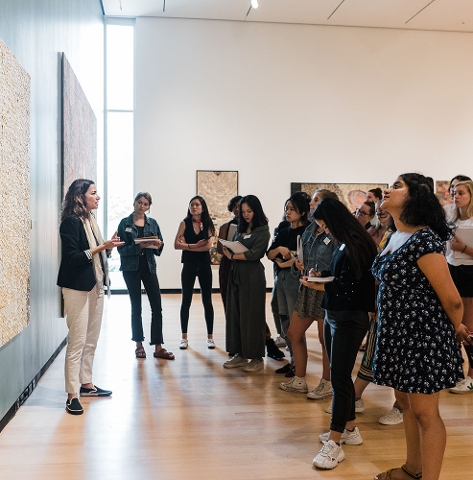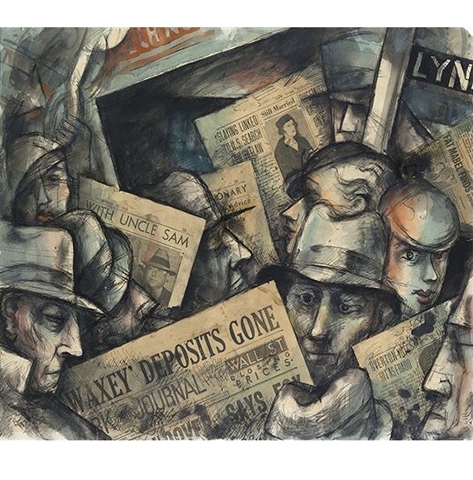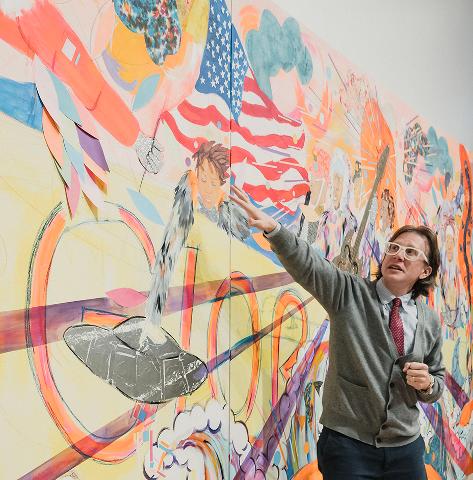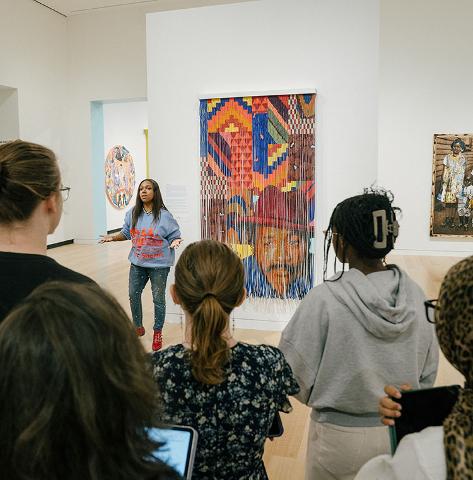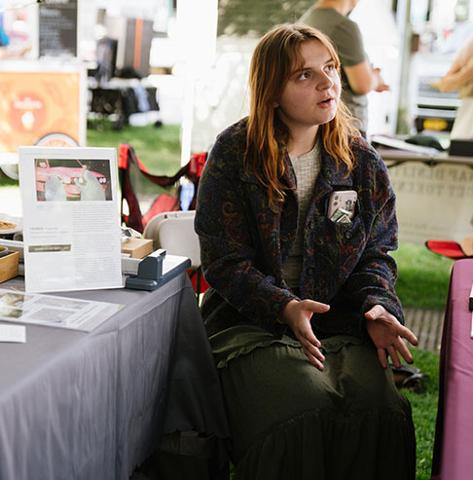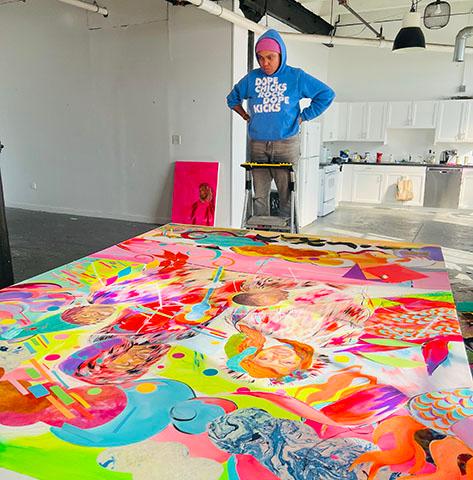Janelle Rodriguez
September 28, 2022
I’ll start this post by quoting a couple of people who are much better with words, i.e. actual authors. French writer Antoine de Saint-Exupéry said “A goal without a plan is just a wish.” On this side of the ocean, American writer Allen Saunders famously stated that “Life is what happens to us while we are making other plans.” I like juxtaposing these two quotes when trying to talk about how curators and museums plan for collaborations with living artists. There is so much planning that goes into these types of projects, whether they be exhibitions, commissions, performances, or programs. But inevitably, at some point along the way, the plans always shift. Ideas evolve, opinions change, and the real world has a habit of ruining a perfect schedule.
Which brings me to our recent collaboration with the ceramicist Donté K. Hayes, who traveled to the Wellin Museum in the spring of 2022 to view our collections and meet with various Hamilton College faculty. Over the course of three days, Hayes became inspired by these campus conversations as well as a specific set of baskets in the museum’s holdings created by Indigenous artisans. By the end of his visit, the curatorial team and the artist had agreed to a commission, in which Hayes would create a ceramic work for the Wellin specifically inspired by his time at Hamilton.
That’s when things got more complicated. Everyone acknowledged that it would be ideal to debut this new work as part of the upcoming fall 2022 exhibition, Dialogues Across Disciplines: Building a Teaching Collection at the Wellin Museum. But the artist had been building a new house with a studio and, like so many other Americans, had suffered several serious delays in the construction process related to the pandemic. There was no way that he would have the necessary facilities ready in time to complete a work over the summer. After some head scratching, we arrived at a new collaboration with the Hamilton art department. Since there were no sculpture classes being held over the summer, Hayes would be allowed to use the ceramics studios on campus to create his work. In June he arrived back on campus for a residency in the Kennedy Center for Theater and Studio Arts. After a week’s worth of very long work sessions (the artist usually begins a workday at 2 a.m. and does not leave the studio until 5 p.m.) he ultimately created six new clay vessels directly inspired by the Wellin and Hamilton. This was a welcome surprise for the museum staff…and also a new problem. We had only budgeted enough funds to cover the cost of purchasing a single work and it seemed almost impossible to determine which one would prove most impactful for our students and faculty. This led us to submit a proposal for a Dietrich Inchworm Grant through the Dean’s Office, which thankfully was reviewed positively and resulted in the distribution of enough funding to secure all six works for the Wellin’s collection.
Currently the museum is displaying one of the vessels by Hayes in the Dialogues Across Disciplines exhibition. The artist titled this work Protector in honor of the museum’s staff—the people he feels are protectors of art, artifacts, and culture. He will return to Hamilton in the spring of 2023 as a Visiting Artist by which time we will have placed many more of his works on view in our permanent collection galleries, situated right next to the Indigenous baskets that first inspired him. I can’t wait to show him these works in our vitrines and to have him talk about each of them with our community. In the meantime, I encourage everyone to view the video of Hayes talking about his work and his time on campus.
I will close with one more quote about planning. Dwight D. Eisenhower reflected on his career by saying that “In preparing for battle I have always found that plans are useless, but planning is indispensable.” As a staff, we often joke about being in the trenches while working on a collaboration with an artist, though art is never as serious as war, or brain surgery, or a lot of other things. But I have found it to be both incredibly challenging and rewarding, in large part because you never know what will happen.


